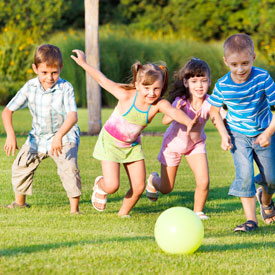Let the children play - OUTSIDE!
Nature Deficit Disorder is affecting our children. Although this phenomenon is not an actual medical diagnosis, research shows that a lack of playing outside in parks and green spaces is contributing to various physical and mental health issues!
Richard Louv explains that Nature Deficit Disorder is when children are too removed from nature, which leads to a number of behavioural issues, including diminished use of the senses, attention difficulties and higher rates of physical and emotional illness.
Children growing up nowadays are surrounded by many technological distractions that prevent them from spending time outdoors. Televisions, computers, laptops, tablets, smartphones and gaming consoles lure children to the screen to watch tv shows, movies and video clips or play games. Regrettably some parents and caregivers use these devices as pseudo child-minders.
The temptation here is to bombard people with research facts and figures about inactive lifestyles, unacceptably high obesity rates, mental health issues and behavioural problems. But rather than dwell on the problems, let’s look at some research that shows how regular interaction with plants and green space can help.
Playing outdoors in parks and green spaces has been proven to reduce ADHD symptoms in children. The outdoor environment, trees and plants provide welcome distractions, with the brain focussing on the colours, light, scents and textures, helping repress ADHD symptoms.
Similarly, in relation to curbing childhood obesity… Children and youth living in greener neighbourhoods reported lower body mass index (BMI) scores, presumably due to increased physical activity or time spent outdoors.
Furthermore, children encouraged to spend more time engaging with nature and given opportunities to learn in an outdoor setting (green education) are more likely to continue enjoying the outdoors as teenagers and adults, positively influencing their health and wellbeing.
It is pleasing to note that when primary school children are given a choice about where to play, more and more are choosing natural areas. Thus the green areas in school grounds stand to make an important contribution in providing equitable, inclusive, healthy and inviting play opportunities for children.
Green space clearly provides children with opportunities to lead happier and healthier lives; however enticing children outdoors to receive a daily dose of green can often be the hurdle. Participating in outdoor sport or recreation activities, building a vegetable garden or simply visiting parks and gardens are simple ways to achieve this.

27-Jan-2014


